VISC 520 Junior Studio | Project 1 | Project 2 | Resources | Competencies | Drive
 What makes for meaningful work? For design legends Ray and Charles Eames, finding purpose at work entailed satisfying three audiences: the client, yourself, and society.
What makes for meaningful work? For design legends Ray and Charles Eames, finding purpose at work entailed satisfying three audiences: the client, yourself, and society.In a hand-drawn doodle created for a 1969 exhibition at the Musée des Arts Décoratifs in Paris, the Eameses explained that the process behind every project they took on—be it a new chair for Herman Miller, dorm furniture for Sears, a design audit for the Indian government, or an exhibition for IBM. First, they found common ground with the client, and together agreed on solutions that would satisfy business goals and benefit the most number of people. — Anne Quito (from an article HERE)
“It is in this area of overlapping interest and concern that the designer can work with conviction and enthusiasm,” they wrote, pointing to the shaded section of the diagram.
The diagram—which the Eameses hung in their studio following the Paris exhibition—also defined the types of clients the sought-after husband-and-wife designers engaged with.”
What is design to you? What have you learned? What do you want to learn more about? What do you love? Who do you want to work with? What/How do you want to design? Why?
Project One: Your Reflection Diagram/Map
Our profession has been additive (designers have more responsibilities: the thinking and making in all its forms across all our media) and our curriculums have been too to keep up. So this assignment’s objective is to get you to slow down for a sec and reflect on your experiences and communicate your unique story of how your work represents your personal goals and our curricular goals. What have you done? Why have you done it? and what does it mean to you? Where could that lead you?
The outcome of this 3 week assignment is that you will create a visualization that connects what you learned (taxonomy of learning) what you are supposed to know to prepare you for the profession (competencies) to what you have done and to what you want to do. You will find the story that is interwoven between these diverse experiences. You will evaluate what you have learned and what you need/want to know.
1. Evaluate work based on bloom’s taxonomy 2. Evaluate work based on AIGA/NASAD competencies 3. Evaluate work based on a personal narrative 4. Create map that communicates all these relationships





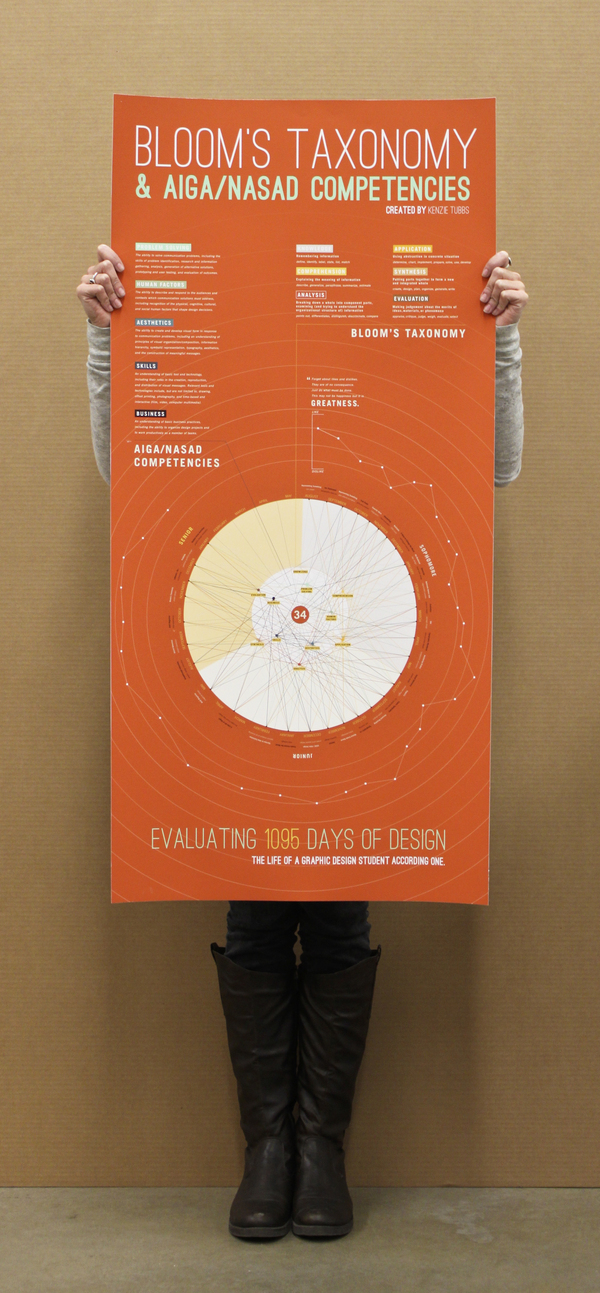
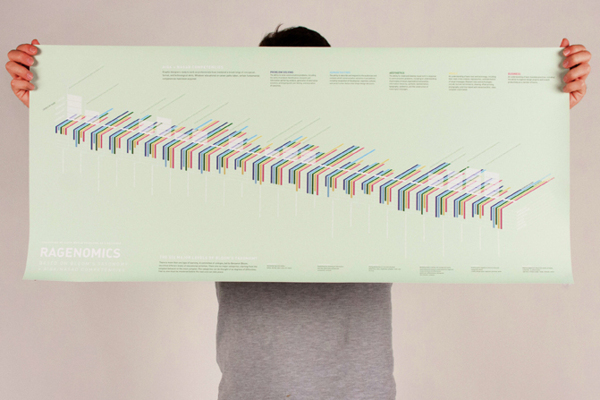

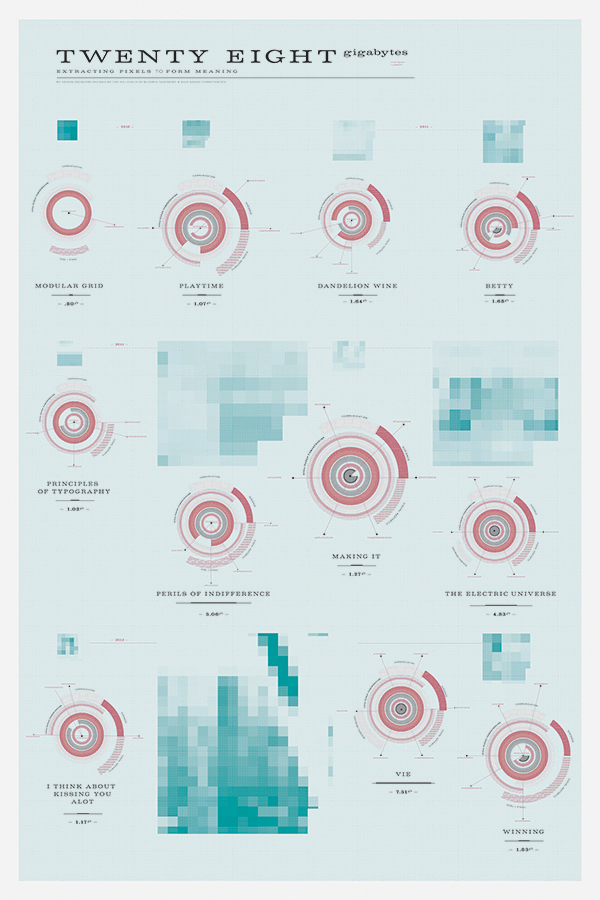
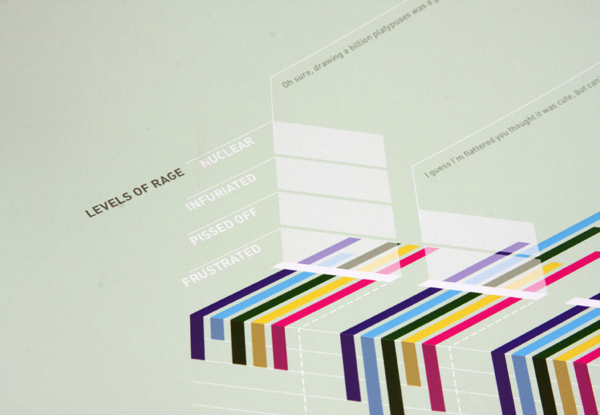


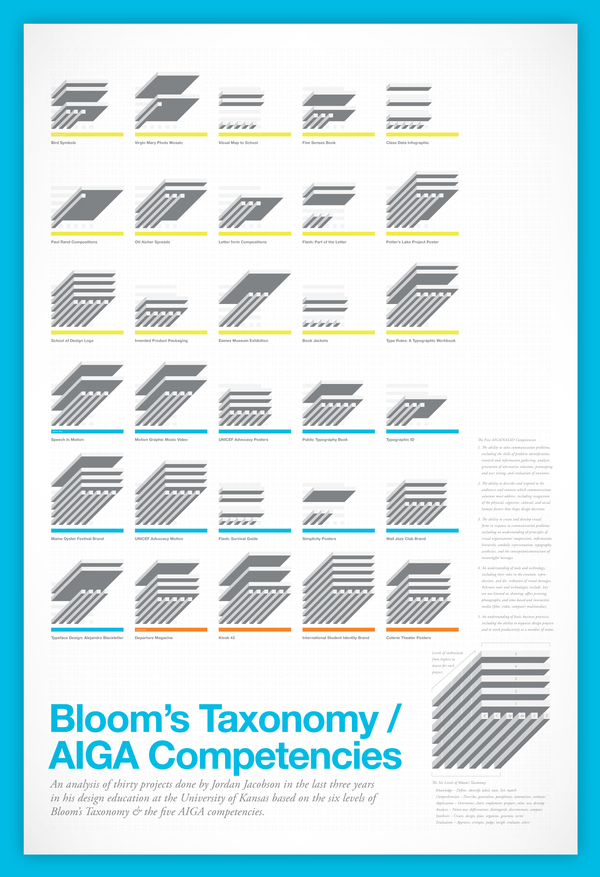
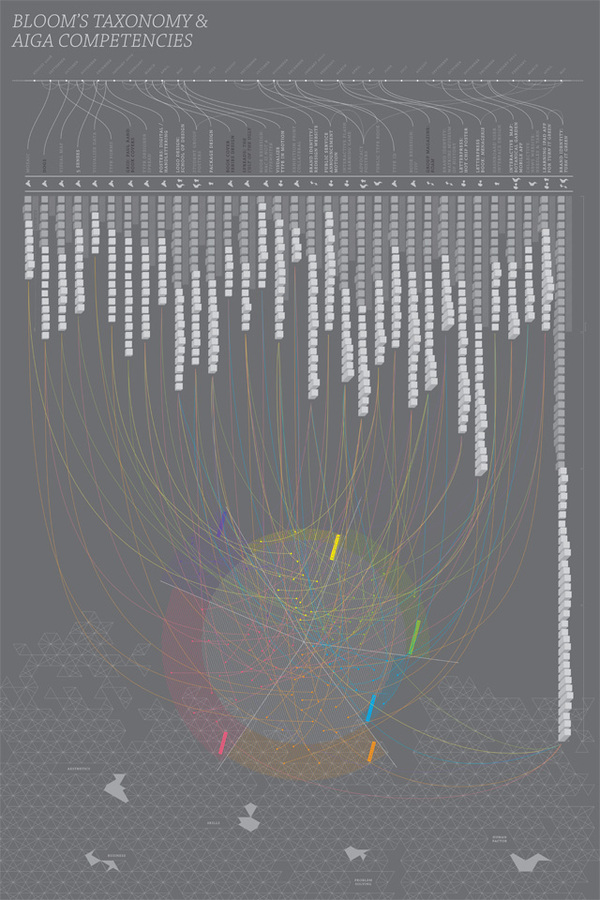

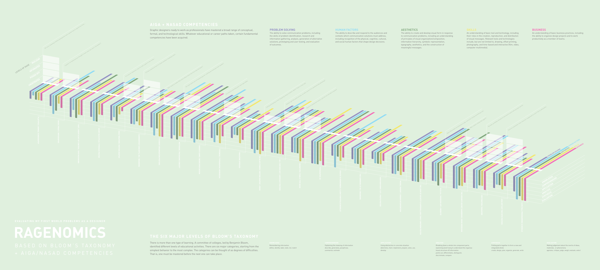

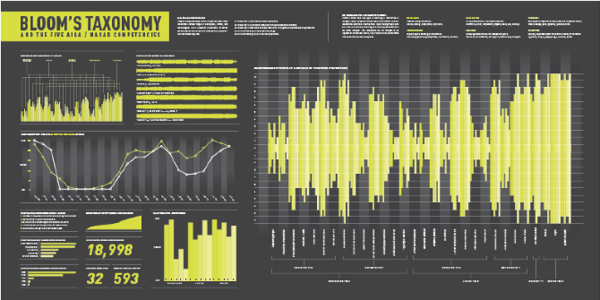

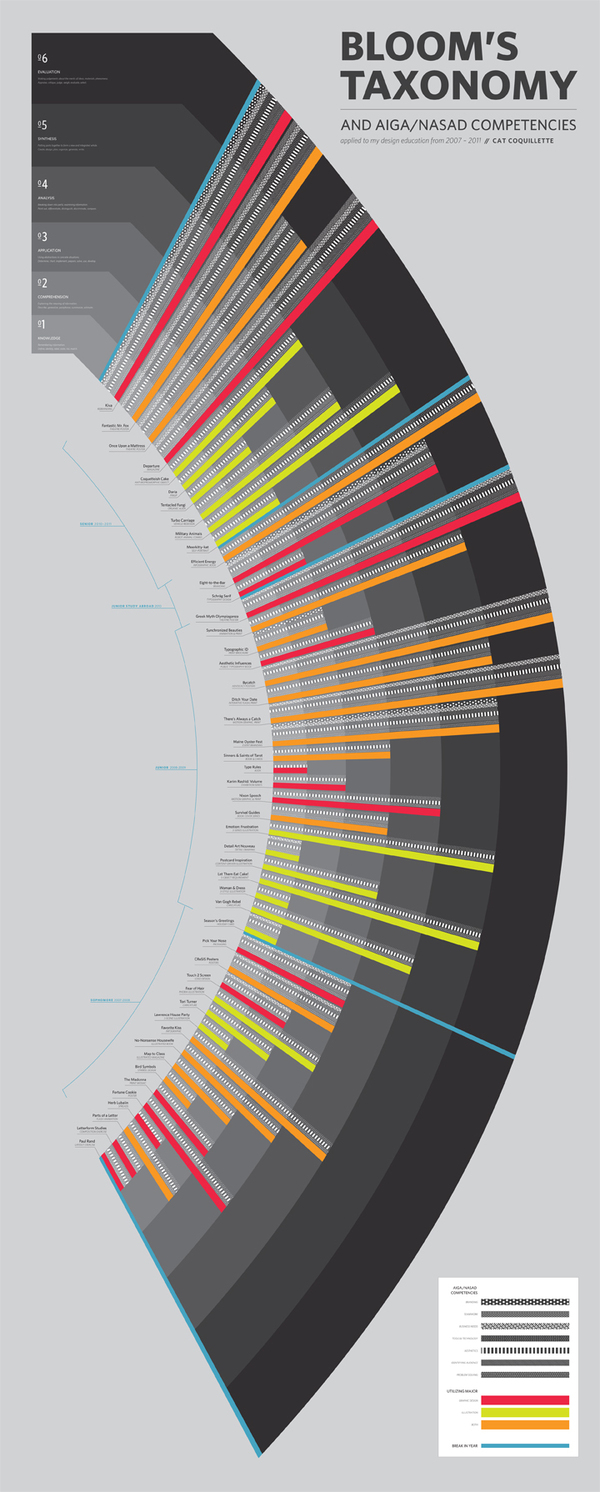



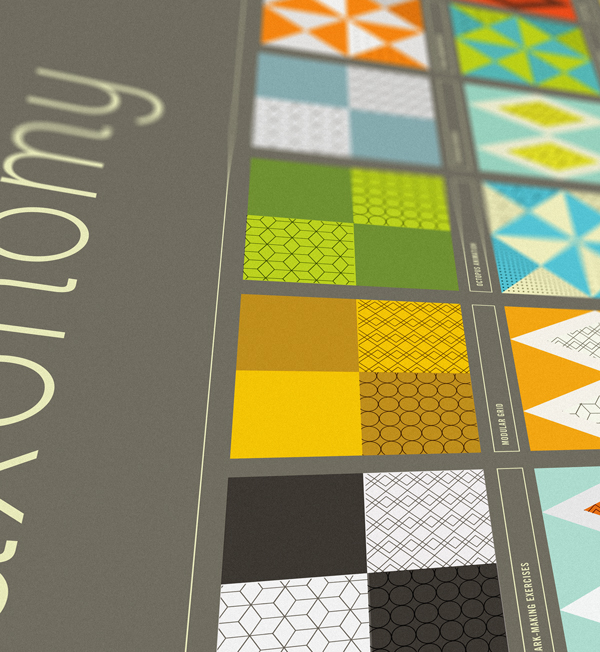
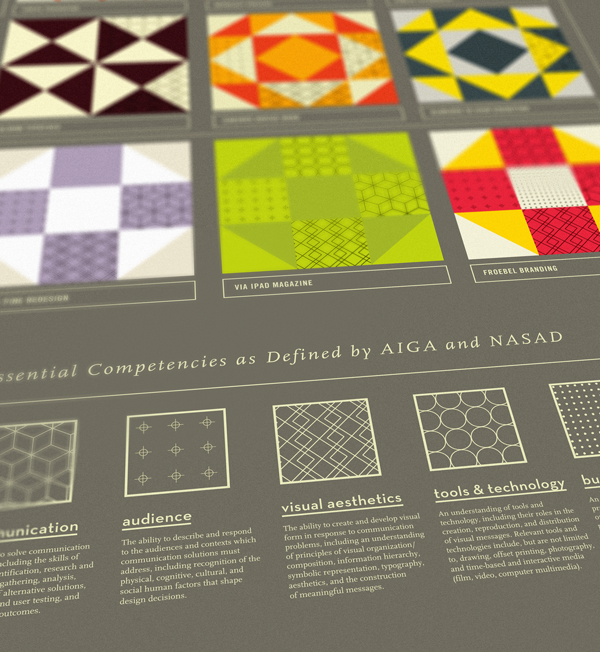
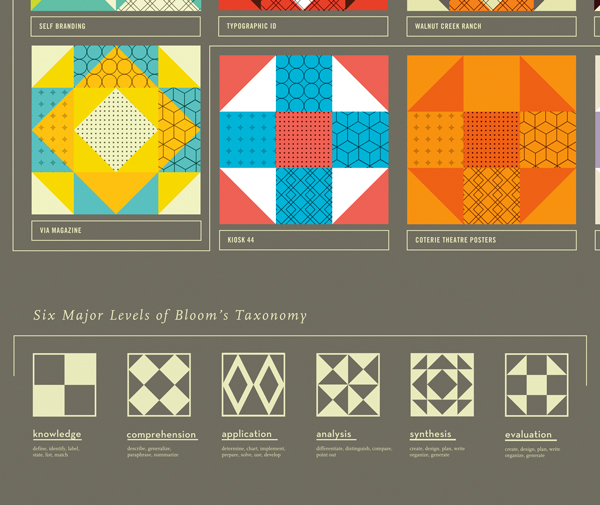
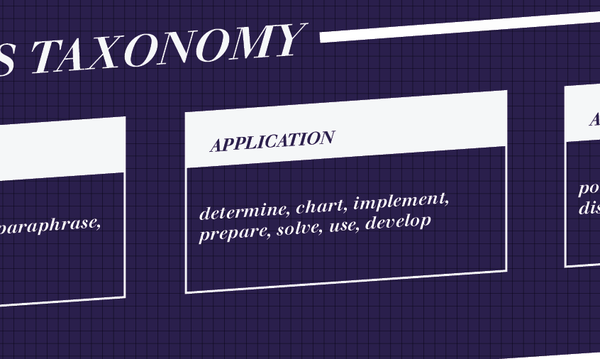
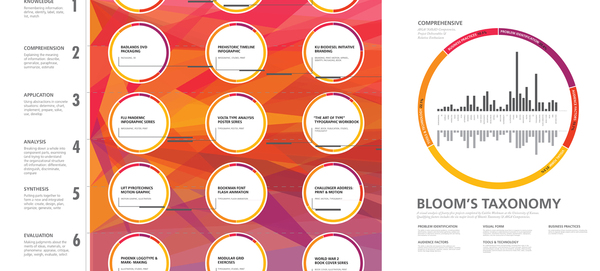

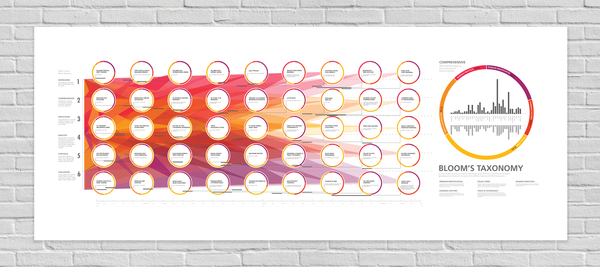
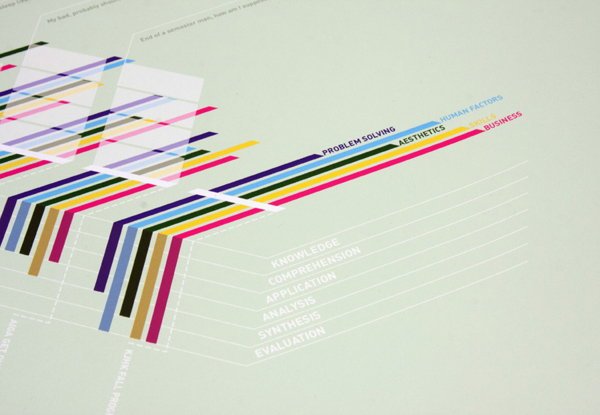
(google any of these...)
Graph-based diagrams: these take a collection of items and relationships between them, andexpress them by giving each item a 2D position, while the relationships are expressed as connections between the items or overlaps between the items; examples of such techniques:
tree diagram network diagram cluster diagram flowchart Euler diagram Venn diagram Existential graph Maps
Chart-like diagram techniques: which display a relationship between two variables that take either discrete or a continuous ranges of values:
histogram bar chart pie chart function graph scatter plot table/matrix exploded view


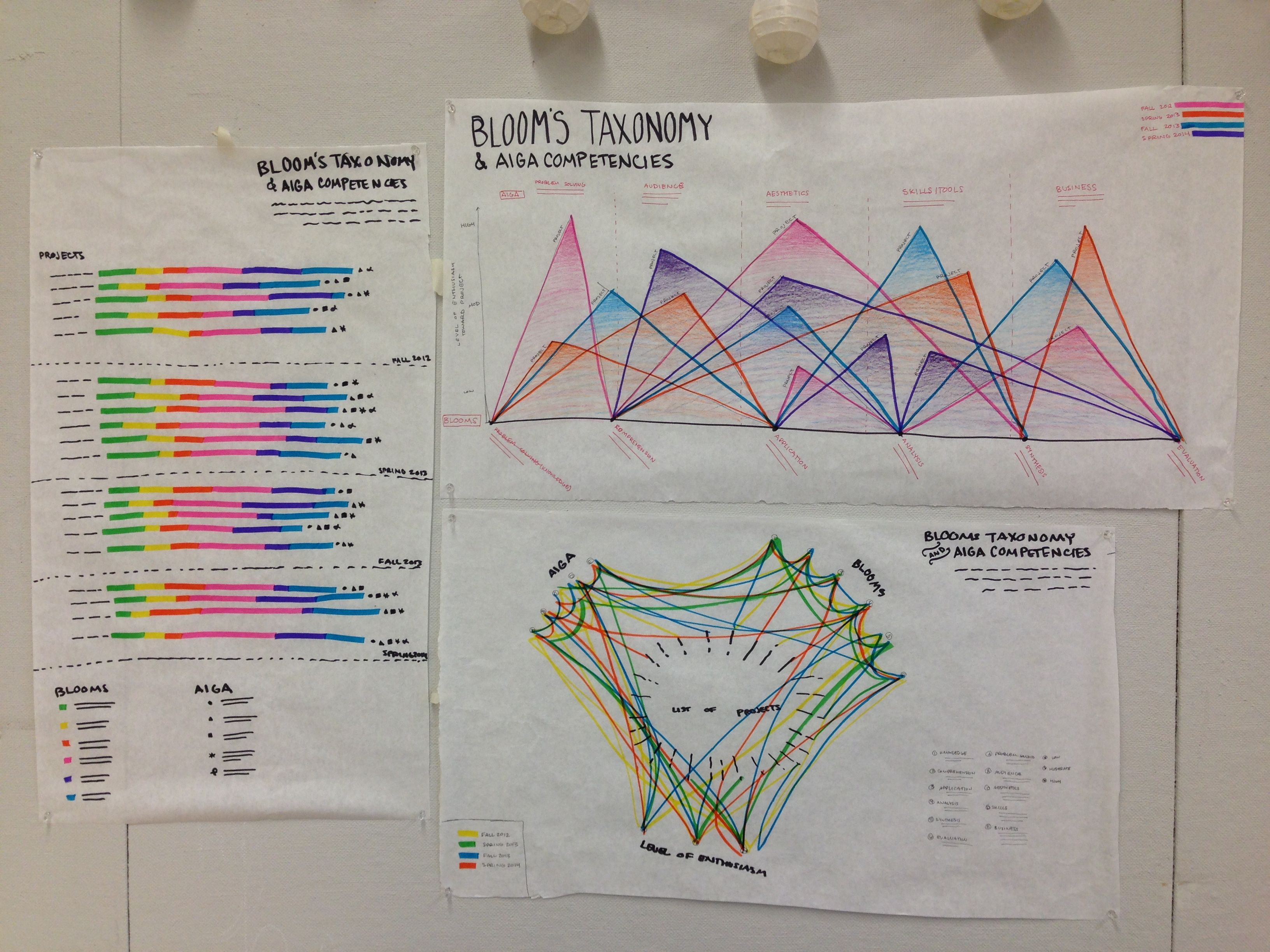
- - - - - - - - - - - - - - - - - - - - - - - - - - - - - - - - - - - - - - - -
WED JAN 18 & THU JAN 19
- - - - - - - - - - - - - - - - - - - - - - - - - - - - - - - - - - - - - - - -
Inclass: Class Intro, Expectations and Syllabus; Set Up & Assign Project One: Reflection Map
Homework: Using post-its start organizing your design educational experiences with regards to Bloom’s taxonomy, AIGA competencies and your personal narrative. Come up with 3 ways of organizing these experiences. Start by using L.A.T.C.H.
PDF from a mapping workshop for your information if you dig mapping
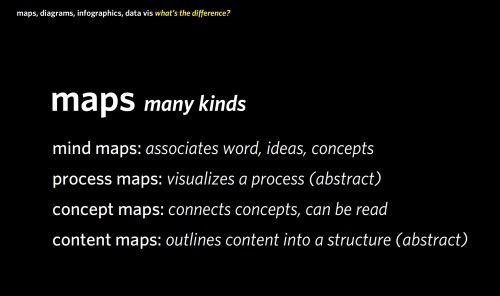
Using the cards given right down whatever pops into your head when asked the following questions. The goal is to get a “pile” of words you can sift through, prioritize and say ye or ney to.
1. What is currently getting you stoked? What are you into?
2. What do you like to design/make?
3. What is going on in the world that you care about?
4. What is strongest in your portfolio? weakest? (types of projects/skills)
5. What part of the design process do you prefer?
6. What industry would you like to work in?
- - - - - - - - - - - - - - - - - - - - - - - - - - - - - - - - - - - - - - - -
MON JAN 23 & TUE JAN 24
- - - - - - - - - - - - - - - - - - - - - - - - - - - - - - - - - - - - - - - -
Inclass: Show your start. Bring in the big paper, notes, post-its, tape etc.
Homework: Design 3 poster concepts. Half size is ok. Produce these concepts however you feel comfortable. Hand sketches if tight will work, but you may want the ability to make shapes (copy & paste, etc.) on the computer.
Create a pdf presentation and use a mood board to help communicate your concepts and upload to this folder “THREE CONCEPTS PRESENTATION” on onedrive. The goal is to find a way to visualize your ideas to get feedback and see what it working.
- - - - - - - - - - - - - - - - - - - - - - - - - - - - - - - - - - - - - - - -
WED JAN 25 & THU JAN 26
- - - - - - - - - - - - - - - - - - - - - - - - - - - - - - - - - - - - - - - -
Optional: Jeremy in office/classroom for anyone that wants feedback/help as you create 3 poster concepts.
- - - - - - - - - - - - - - - - - - - - - - - - - - - - - - - - - - - - - - - -
MON JAN 30 & TUE JAN 31
- - - - - - - - - - - - - - - - - - - - - - - - - - - - - - - - - - - - - - - -
Inclass: Review 3 concepts
Homework: Refine one direction and bring to next class full size in color. Tile on the laser printer if you want.
- - - - - - - - - - - - - - - - - - - - - - - - - - - - - - - - - - - - - - - -
WED FEB 01 & THU FEB 02
- - - - - - - - - - - - - - - - - - - - - - - - - - - - - - - - - - - - - - - -
Inclass: Review poster full-size.
Homework: Refine one direction based on feedback. Print full-size in color. Tile on the laser printer if you want.
KU DESIGN LECTURE this week: Hallmark Panel
- - - - - - - - - - - - - - - - - - - - - - - - - - - - - - - - - - - - - - - -
MON FEB 06 & TUE FEB 07
- - - - - - - - - - - - - - - - - - - - - - - - - - - - - - - - - - - - - - - -
Inclass: Review poster full-size.
Homework: Refinements. For next week. Final poster! Bring in printed full-size and save as a pdf and post in the FINAL one drive folder.
- - - - - - - - - - - - - - - - - - - - - - - - - - - - - - - - - - - - - - - -
WED FEB 08 & THU FEB 09
- - - - - - - - - - - - - - - - - - - - - - - - - - - - - - - - - - - - - - - -
Inclass: Jeremy lecture/recap on readings and branding.
Homework: Begin Project 2. Bring in a Launch and a Refresh idea to share with the class. Make a short slide presentation for each and communicate what it is and why it should change.
- - - - - - - - - - - - - - - - - - - - - - - - - - - - - - - - - - - - - - - -
MON FEB 13 & TUE FEB 14
- - - - - - - - - - - - - - - - - - - - - - - - - - - - - - - - - - - - - - - -
Final Reflection Poster Due. Bring in printed full-size and save as a pdf and post in the FINAL one drive folder.